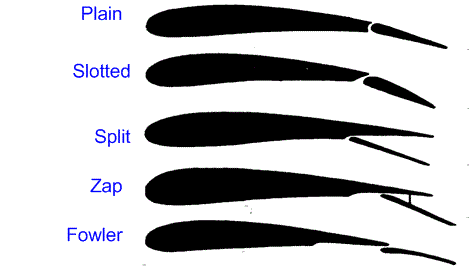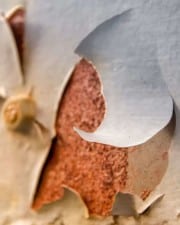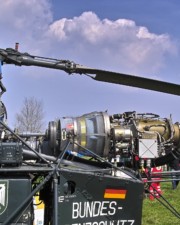In any aircraft, the flaps play an important role in the way it flies. If you think you know what flaps are and why they are so important, you might only know half of it. Indeed, these are an interesting part of an airplane that are small yet serve a very important function, and even if you’ve never noticed them before when you fly, you’ll likely notice them from now on.
Table of Contents
What Are Aircraft Flaps?
Any fixed-wing aircraft has flaps mounted on the wing-trailing edges of the plane. These are high-lift devices that, at a certain airspeed, can actually increase an aircraft wing’s lift.
They serve several other purposes as well, including providing extra lift when the plane is taking off and increasing the curvature of the wing when they’re extended, which allows the aircraft to generate the right amount of lift even at lower speeds.
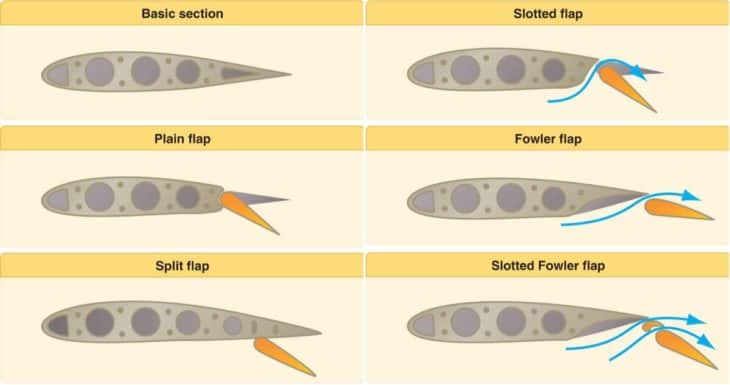
Aircraft flaps essentially aid in the current phase of your flight because they help the wing of the plane adapt to that phase so that it is more successful.
With aircraft flaps, you can reduce the roll when taking off and landing, produce more lift so you can lower your takeoff and landing speeds, and produce more drag so that you can have a steeper descent without an increase in airspeed.
Types of Aircraft Flaps
There are also many aircraft flap types, and even though they are all equally important, there are still different characteristics and advantages of each, as shown by the following information.
1. Plain Flaps

Hinged to the back of the aircraft’s wing, plain flaps pivot down when they are extended. They are somewhat limited in the amount of lift they can create because air can lose energy and start to separate from the wing whenever air moves over the wing.
The more pronounced the extension of the flaps is, the stronger the airflow is, resulting in the wing having a large wake behind it.
Of course, with plain flaps, you can fly the plane to a steeper descent without increasing the airspeed because of the drag that is created by this wake.
The first plane to use plain flaps was the Fairey Hamble Baby in 1916, and these days they are normally only used when you want a simpler way to operate the aircraft.
Today, the Cessna A185F is one of the planes that utilizes plain flaps during their flights.
Extended plain flaps help change the curvature of the wing and increase the chances of flow separation.
One of the main reasons this type of flap is not used very often is that other, more advanced flaps are now available.
2. Split Flaps

If you visit an airshow and look around at the older warbird planes they usually feature, you might see some split flaps. Otherwise, they are not very common these days.
Split flaps deflect from the wing’s lower surface and produce a little more lift than plain flaps, but like plain flaps, they also produce quite a bit of drag.
The Douglas DC-1 was one of the first planes to use split flaps, which can be used as a spoiler when they’re fully extended.
As the name suggests, this is a two-part type of aircraft flap, and only the lower portion moves, while the upper surface stays immobile.
Depending on speed and other factors, split flaps can edge the nose of the plane either up or down, and they became very popular in the 1930s.
3. Slotted Flaps
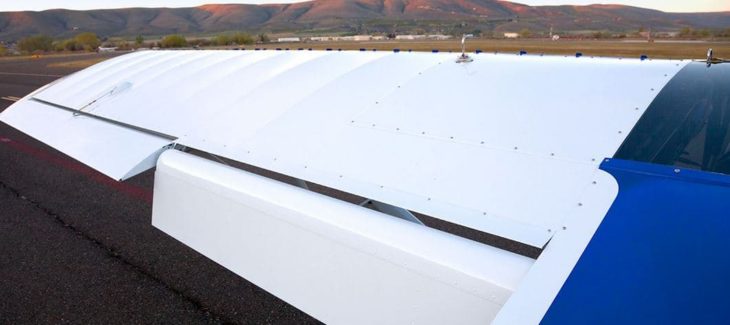
One of the most common aircraft flap types is the slotted flaps, which are used in most commercial airplanes today.
They look similar to plain flaps except they contain a gap or slot between the flap and the wing that helps decrease the amount of air separation that occurs.
In other words, the airflow remains attached to the flap and provides more lift than the split flap.
With slotted flaps, the higher air found below the wings flows upward and the boundary layer is energized, and this is one of the main reasons that the air flow separation is not as severe as it is in other types of aircraft flaps.
4. Fowler Flaps

This is one of the four major types of aircraft flaps, and they are perfect for very large jets that need a lot of lift, but a limited amount of drag.
Fowler flaps extend out on tracks or rails and often have a series of slots to add energy to the airflow.
They increase the area on the wing itself and they are especially useful when taking off.
As Fowler flaps extend more and more, they move more in a downward motion to create a little more lift, but a lot more drag, which is useful in many circumstances.
They are similar to slotted flaps except they can extend both down and back. Many aircraft, including the P-47d Thunderbolt, use Fowler flaps.
5. Krueger Flaps

In addition to the four main aircraft flap types, there are other types as well. The Krueger flaps, for instance, differ from other types because instead of being found on the trailing edge of the aircraft, they are found on the plane’s leading edge.
When these flaps are deployed, the wings get a new leading edge because their total chord length is increased.
An example of Krueger flaps can be found on the Boeing 727, which uses inboard Krueger flaps and standard outboard slats.

In the lower wing of the plane, some portions are rotated while using these flaps, which results in the lower wing being brought in front of the main wing of the front of the leading edge.
Both lift and drag are increased when Krueger flaps are used.
These days, Krueger flaps are found in many swept-wing airliners. They have been around since 1943.
6. Zap Flaps

Invented by Edward Zaparka in the early 1930s, these types of flaps weren’t used often with the exception of the Northrop P-61 Black Widow, the first wartime plane used in night fighting.
The flap consists of a leading edge that is mounted on a track and a mid-chord section that attaches to a pivot via an arm just above the track.
When the leading edge of the flap moves aft along that track, a triangle forms and it is this triangle that forces the flap down because the flap’s surface gets narrower and deeper.
Zap flaps increase the effective wing area and provide both a higher maximum lift and higher drag capacity, especially when compared to split or other types of flaps.
7. Junkers Flaps

Compared to plain or split flaps, the Junkers flaps create more lift and more drag, and they were once seen on planes such as the Junkers Ju 52 and the Junkers Ju 87 Stuka.
Junkers flaps are also utilized on the Denney Kitfox, a two-seater small plane that is built by an amateur and is sold as a kit that people can put together themselves.
The Junkers flaps are aircraft flap types that are essentially a slotted plain flap that is fixed right below the wing’s trailing edge and which rotates about its forward edge.
It is a mechanically simple flap and was invented in the late 1920s by Otto Mader Junkers, who wanted a plane with decreased takeoff and landing distance, as well as increased roll response while the plane was in flight.
References ▾
Related Posts
